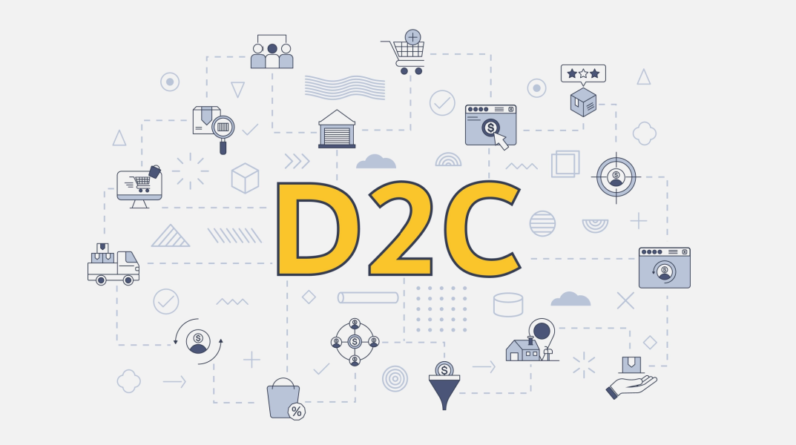
It’s not 2014 anymore.
One decade on, and now your mom is no longer berating you for purchasing clothes “on the line.” Instead, she’s got a brand new air fryer, shipped with next-day delivery from her new favorite store, Amazon.
It’s 2024, and online shopping has never been bigger, taking a larger percentage of the overall shopping numbers every year.
In 2021, global retail ecommerce sales reached approximately $4.9 trillion U.S. dollars. Projections indicate a 56% growth over the next four years, with expectations to surpass $8.1 trillion by the year 2026.
What was once seen as risky is now the norm, and due to advancements in security and user-experience, the opportunity to gain a slice of the piece of the commerce pie with your own direct-to-consumer business is easier than ever.
Just one small issue.
You have no idea what direct-to-consumer (DTC) means.
And that’s okay! At least you (unlike many others out there) have the confidence to admit it.
So, let’s set that straight and dive into everything you need to know about DTC brand models.
First Off, What Is Direct-to-Consumer?
DTC is a model businesses use to sell products online straight to customers. This model eliminates the pesky middleman and doesn’t require you to team up with brick-and-mortar stores or large retail partners.
A brand that utilizes this model stocks its own product and is in charge of marketing, fulfilling orders, managing stock levels, and delivering orders. It’s a little more work, but it also allows you to provide superior customer service, take better control of your branding and communications, and widen those lovely profit margins.
But why has the direct-to-consumer become so popular?
Customer expectations for speed and accessibility are at an all-time high. Brands like Amazon are making it easier than ever to order and receive something before you’ve even had a chance to consider if you need it. (fun fact: I have 12 pairs of scissors in my house because I keep forgetting I already replaced the ones I thought I had lost, only to put the new ones in the same place and repeat the cycle. If my name were Edward, my Halloween costume would be sorted).
Consumers now expect brands to either offer a similarly fast service or, if they are unable to, a customer experience that is unique and unrivaled. When you do manage to pry consumers away from Bezo’s greedy mitts, you must wow them with your service, showing them your values align and connecting with them on a deeper level.
When brands use multiple wholesalers or require you to drive 20 minutes to their storefront, that type of service is unobtainable.
Don’t Skip: How to Start a Dropshipping Business (and Actually Be Successful)
Okay, So How Does It Work?
Instead of gaining sales through digital channels such as the aforementioned Amazon or other brands like Etsy or eBay, you get shoppers to go straight to your website (or social channels) and purchase there.
The model can only be effective by:
Building repeat purchases
Making a seamless customer ordering experience
Excellent customer service
Community and loyalty programs
Making them feel valued and personally connected to your brand
As a DTC brand, you can achieve this intimacy with customers. And over time, as these customers come back, you will start to see your brand grow a fiercely loyal following.
Benefits DTC brands have…
Better customer communication lines: By dealing with customers directly, you get to communicate with them, well, directly! That means you can build on customer relationships, help improve brand loyalty, and turn one-time purchasers into returning customers.
Control of the process: DTC means less reliance on third parties, allowing you to take control of the fulfillment process, which on a case-by-case basis is often much cheaper, allowing you to pass those savings on to your customers, improve your profit margins, or both!
Better marketing opportunities: With more control over your brand, you have the freedom to run targeted promotions, provide custom packaging, and create products or services that other brands that rely on wholesalers can’t.
…and now some of those pesky downsides
Higher reward = higher risk: Growing your own audience is not easy, especially now that there are old-school retailers like Walmart J. Crew or Target creating robust DTC experiences. But if you do succeed, the results can be immense.
More responsibilities: While the profit margins may be significantly higher, owning the manufacturing operations, distribution lines, and shipping process is incredibly time-consuming.
Outsourcing costs: Even with a DTC model, you will be forced to eventually outsource some of your business, such as software support, marking consultation, or product development.
Keep Learning: How to Come Up with New Product Ideas (That Don’t Suck)
It’s Time to Take Back Control
It’s time for you to take control of your brand and start building the solid foundations of a long-lasting business through DTC.
Learn more about DTC and other options available to you with our free ecommerce course.








